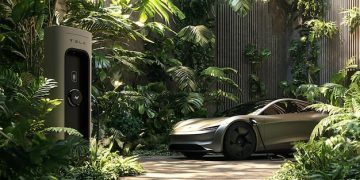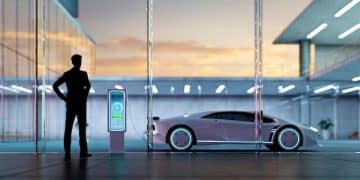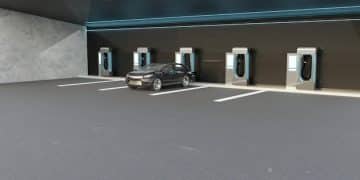Electric vehicle news: advances in battery efficiency
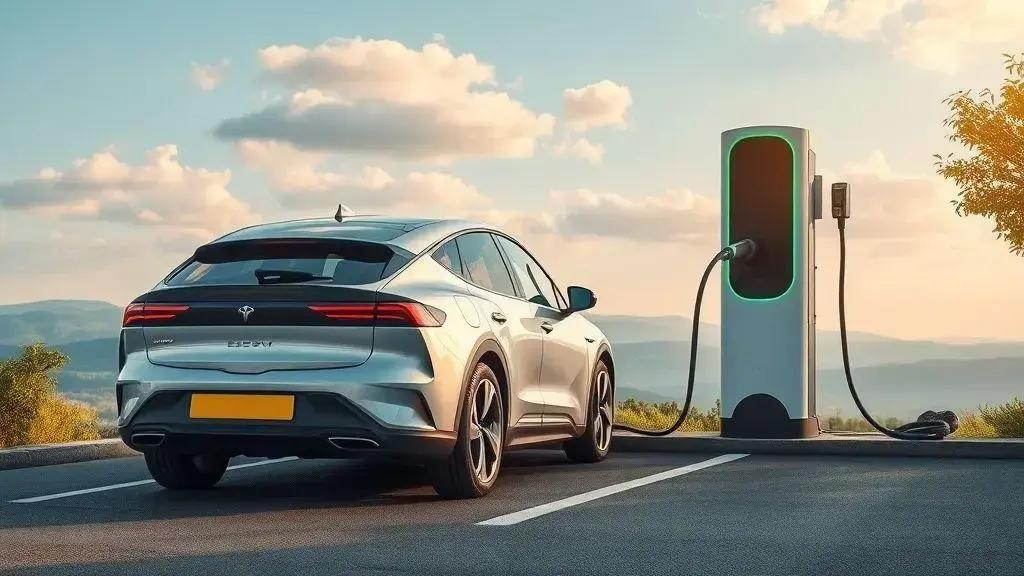
The latest advancements in electric vehicle technology, particularly in battery efficiency and charging speed, significantly enhance performance, making EVs more accessible and environmentally friendly for users.
Electric vehicle news explores the exciting progress in battery efficiency and charging speed, shaping the future of sustainable transportation. Curious about how these advancements can affect your driving experience? Let’s dive in!
Latest trends in battery technology
The world of electric vehicles is changing rapidly, and latest trends in battery technology are at the forefront. Enhancing how we think about energy storage is essential for electric vehicles (EVs) to become more efficient and accessible. New advancements bring innovative materials and designs to improve performance.
Solid-state batteries
One of the most exciting developments is the shift towards solid-state batteries. These batteries use solid electrolytes instead of liquid ones, making them safer and more efficient. They offer higher energy density, which means better range for EVs and faster charging times.
Battery recycling technology
As more EVs hit the roads, the need for sustainable solutions becomes critical. Battery recycling is gaining attention as it allows us to recover valuable materials like lithium and cobalt. This not only helps reduce waste but also lowers the demand for new materials, making EV production more sustainable.
- Reduces environmental impact
- Conserves natural resources
- Supports circular economy practices
In addition to solid-state technology and recycling efforts, another trend is the enhancement of fast-charging capabilities. Charging stations equipped with advanced technology can significantly reduce the time it takes to charge an EV. Innovations like ultra-fast chargers are popping up, allowing drivers to recharge in just a matter of minutes rather than hours.
AI in battery management
Artificial intelligence is making a big impact on how battery systems are managed and optimized. By using AI algorithms, manufacturers can improve battery life and monitor performance in real-time. This leads to better safety, efficiency, and user experience for electric vehicle owners.
With all these stunning advancements, the landscape of battery technology is evolving. As manufacturers continue to invest in research and development, the future looks bright for electric vehicles and the capabilities that powerful batteries will bring.
Charging speed improvements explained
Charging speed improvements are a game changer for electric vehicles (EVs). These advancements help make EVs more convenient and user-friendly. The faster EVs can charge, the more appealing they become to consumers, transforming the electric vehicle landscape.
Ultra-fast charging technology
One of the most significant developments is ultra-fast charging technology. This technology allows drivers to recharge their EVs in a fraction of the time it takes with traditional chargers. With ultra-fast chargers, you can gain up to 80% battery capacity in as little as 20-30 minutes, making road trips much easier.
New charging infrastructure
As charging speed improves, a robust charging infrastructure is essential. Many new networks are emerging, focusing on installing high-powered charging stations along major highways and in urban areas. This expansion makes it easier for EV owners to find charging points when they need them.
- Increased availability of high-speed chargers
- Strategic placement near popular destinations
- Partnerships between governments and private companies
Battery technology plays a crucial role in these improvements. Manufacturers are developing batteries that can handle higher charging speeds without degrading. By using advanced materials and cooling systems, they ensure that batteries remain safe and effective during rapid charging.
Furthermore, charging speed improvements are not just limited to hardware. Software also plays a vital role. Smart charging systems can optimize charging times based on grid demand, ensuring efficiency and convenience. These systems can adjust the charging rate, providing the best performance while considering energy consumption.
Overall, as charging speed continues to improve, electric vehicles become more accessible for everyone. These advancements not only enhance user experience but also promote wider adoption of sustainable transportation solutions.
Impact of efficiency on EV adoption
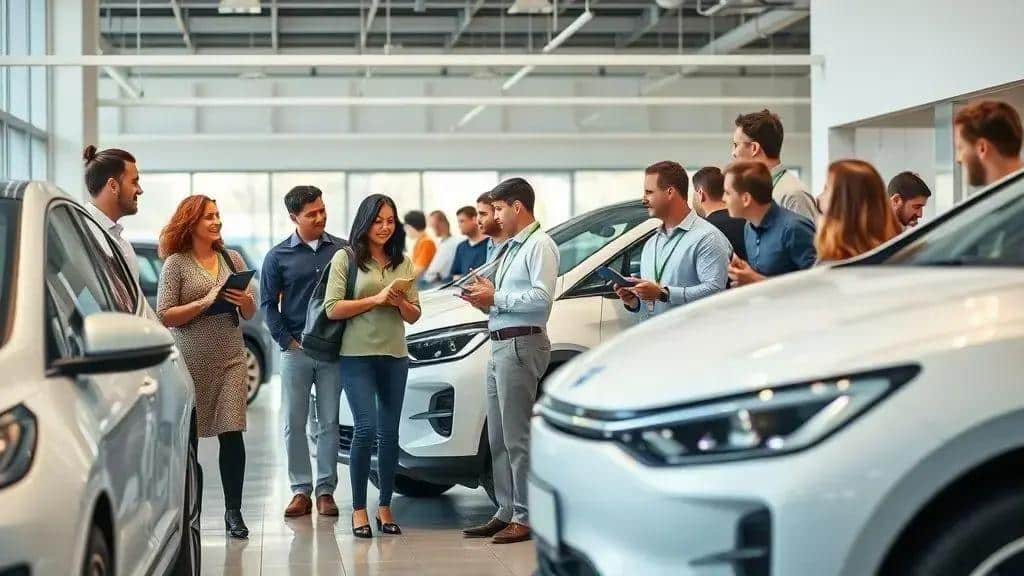
The impact of efficiency on EV adoption is significant. As electric vehicles become more efficient, they appeal more to potential buyers. Higher efficiency often translates to longer ranges, making EVs more practical for everyday use.
Cost savings with efficient EVs
Efficient electric vehicles lead to cost savings for drivers. When EVs use energy more efficiently, it reduces electricity costs over time. This savings can make a big difference in a household budget, encouraging more people to consider making the switch from gasoline cars.
Environmental benefits
Efficiency also highlights the environmental benefits of switching to EVs. More efficient vehicles produce fewer emissions throughout their lifetime. This reduction in carbon footprint encourages individuals who are environmentally conscious to choose electric options.
- Lower greenhouse gas emissions
- Reduced air pollution
- Minimizing reliance on fossil fuels
Additionally, the improvements in battery technology contribute to more robust efficiency. Batteries that can hold more charge and last longer contribute to the overall performance of EVs. As manufacturers develop better battery solutions, it enhances the user experience and pushes more potential buyers toward considering an electric vehicle.
Moreover, government incentives for efficient vehicles have a significant impact. Many regions offer rebates and tax credits for purchasing electric cars. These incentives make EVs more financially attractive, further promoting their adoption.
As the efficiency of electric vehicles continues to improve, it will likely influence positive shifts in public perception. More consumers will see EVs as viable options for their everyday transportation needs, increasing the overall adoption rate.
Future outlook for electric vehicles
The future outlook for electric vehicles is bright and full of promise. As technology advances, we can expect innovations in battery life, charging speed, and overall performance. These improvements will make electric vehicles more appealing to a broader audience.
Advancements in battery technology
One of the key aspects shaping the future of EVs is advancements in battery technology. Research into solid-state batteries is particularly exciting. These batteries not only offer higher energy density, but they also promote faster charging and enhanced safety features. As these batteries become commercially viable, they will significantly boost the efficiency of electric vehicles.
Integration with renewable energy
Additionally, the integration of electric vehicles with renewable energy sources such as solar and wind is on the rise. This synergy can make EVs even more sustainable, reducing dependence on fossil fuels. Home charging stations powered by solar panels will allow users to charge their vehicles using clean energy, further decreasing overall carbon footprints.
- Reduction in energy costs
- Increased adoption of green technologies
- Support for government sustainability goals
Furthermore, improved public infrastructure will play a crucial role in the future of electric vehicles. Cities are becoming more focused on building charging stations to support EV growth. As charging networks expand, drivers will gain confidence in the practicality of owning an electric vehicle.
Moreover, the automotive industry is witnessing a growing shift towards electrification. Major car manufacturers are pledging to transition their lineups to all-electric models. This trend reflects a shift in consumer demand as people become more aware of the environmental impacts of traditional fuel sources.
As we look ahead, it’s clear that the future of electric vehicles is not just a trend; it’s a movement toward a more sustainable and efficient way of transportation. With a combination of technological innovation, integration with renewable energy, and supportive infrastructure, electric vehicles are poised to become a dominant force in the automotive market.
Comparative analysis of battery life and performance
A comparative analysis of battery life and performance is vital to understanding the capabilities of electric vehicles (EVs). Batteries are the heart of these vehicles, determining how far they can travel on a single charge and how quickly they can be recharged.
Factors affecting battery life
Battery life is influenced by several factors, including temperature, charging habits, and how the vehicle is used. Higher temperatures can degrade battery cells faster, reducing overall life expectancy. Additionally, frequent fast charging may lead to more wear.
Different battery technologies
Regarding performance, various battery technologies exist, each with its strengths and weaknesses. Lithium-ion batteries, the most common in EVs, provide excellent energy density and charging efficiency. In contrast, solid-state batteries, still in development, offer the potential for greater safety and longevity but are not widely available yet.
- Lithium-ion batteries: High energy density and good cycle life
- Solid-state batteries: Potentially longer life and safer
- NCA (Nickel Cobalt Aluminum): High energy density but expensive
Energy density refers to how much energy a battery can store relative to its size. A battery with high energy density allows for longer driving ranges, which is crucial for consumer satisfaction. Performance metrics include not only how far an EV can travel but also how quickly it can recharge.
Charging speed improves as technology advances. Innovative charger designs and better battery management systems allow for rapid charging without compromising battery life. Some manufacturers are now offering “superfast charging” features that can charge a vehicle to 80% in under an hour.
Consumer preferences also impact the market for various battery technologies. Many drivers prioritize long-range capabilities, while others focus on charging speed and sustainability. Companies need to balance these factors when developing their next-generation electric vehicles.
FAQ – Frequently Asked Questions about Electric Vehicles
What are the benefits of improved battery technology in electric vehicles?
Improved battery technology leads to longer ranges and faster charging times, making electric vehicles more convenient and practical for users.
How do charging speed improvements affect electric vehicle adoption?
Faster charging speeds reduce downtime for drivers, encouraging more people to choose electric vehicles as they become more convenient for everyday use.
What environmental impacts do electric vehicles have?
Electric vehicles help reduce greenhouse gas emissions and air pollution, contributing to a cleaner and healthier environment.
Are electric vehicles more cost-effective in the long run?
Yes, electric vehicles typically have lower operating costs compared to traditional gasoline cars, thanks to savings on fuel and maintenance.
